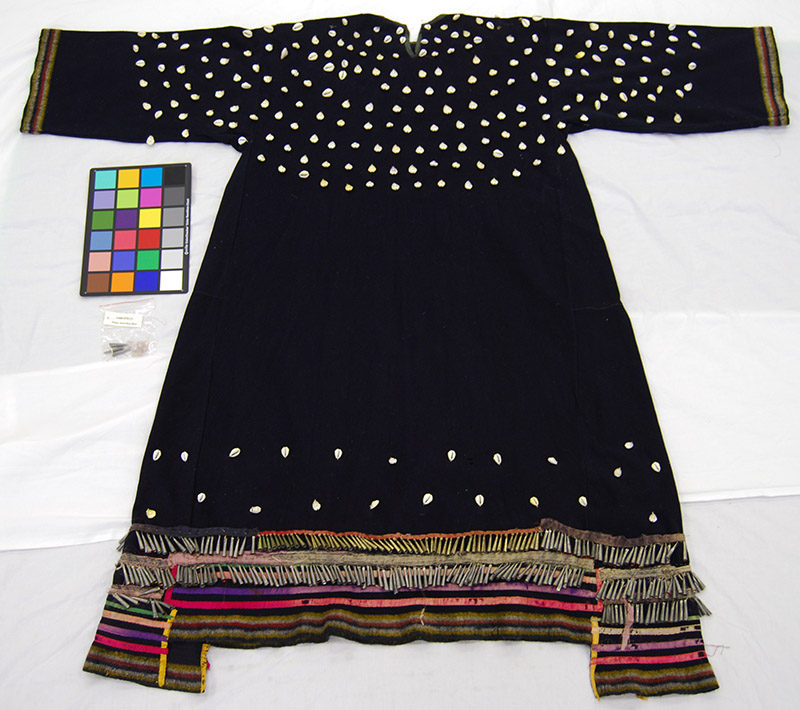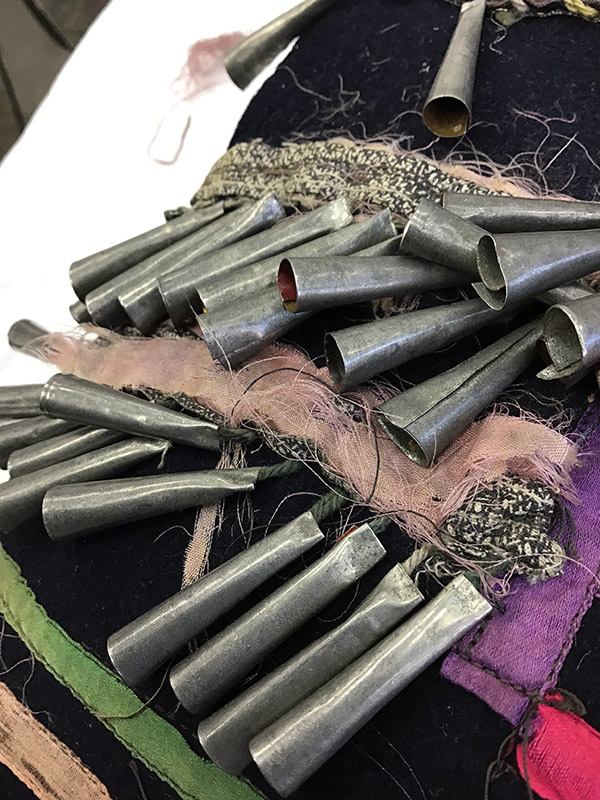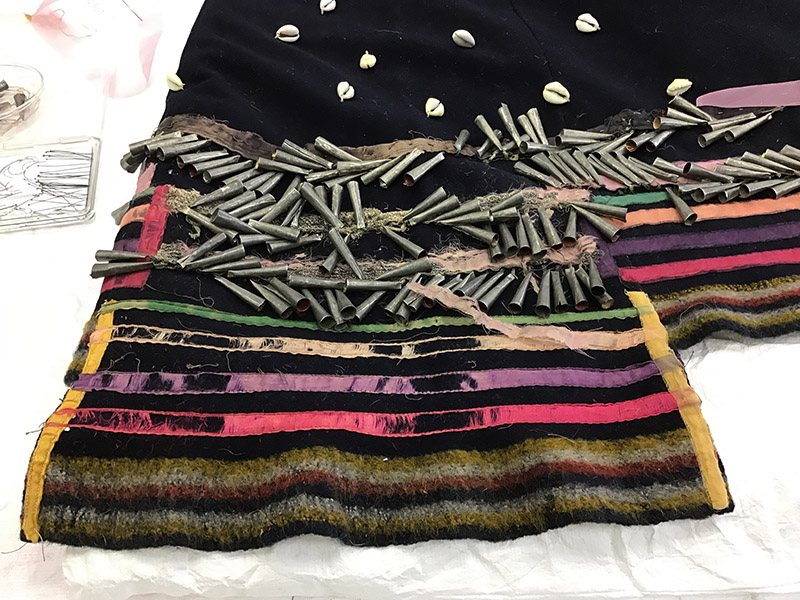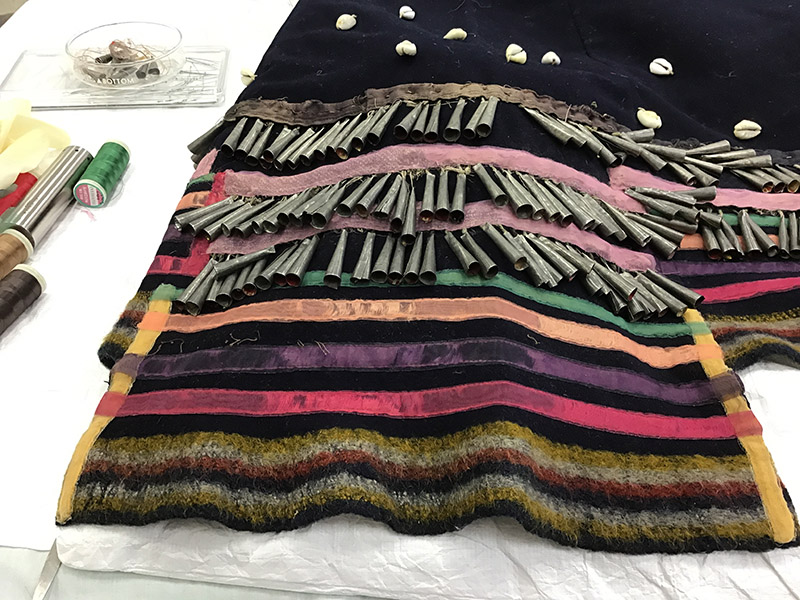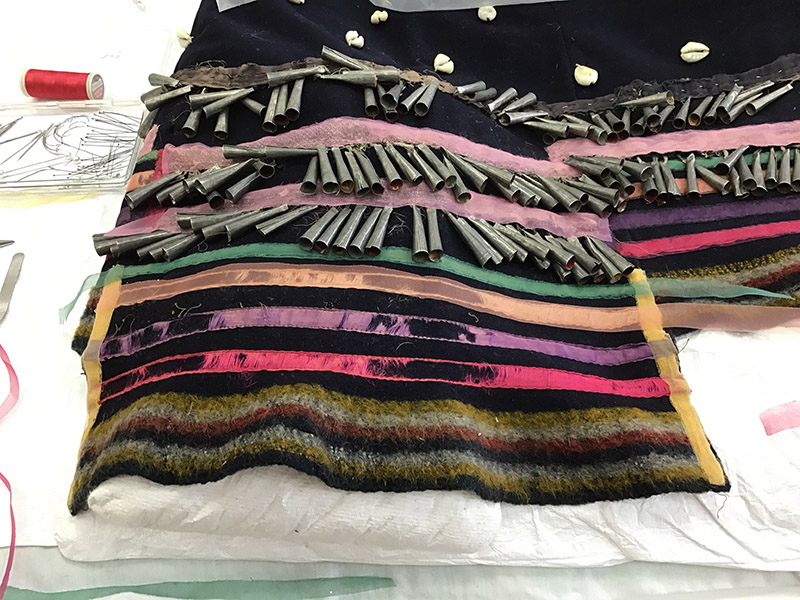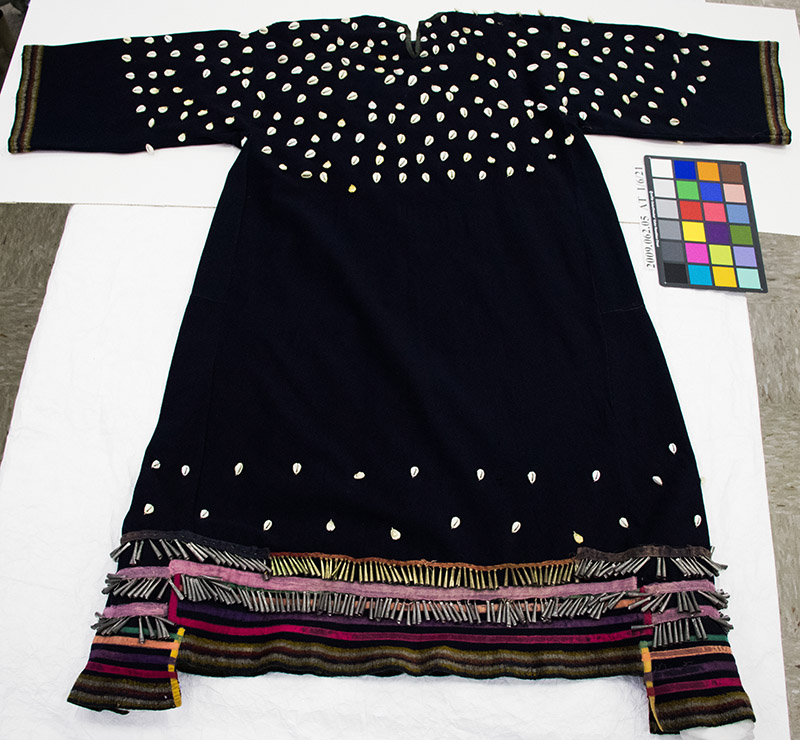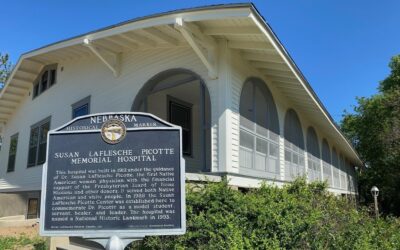We knew we couldn’t halt the rapid degradation of the silk, but luckily there was a simple way to salvage what remained and prevent further loss of original material.
Sometimes we store artifacts in perfect archival housings, within ideal environmental conditions, and materials still rapidly deteriorate due to inherent vice within. This was the case with a Sioux tradecloth dress from History Nebraska’s collection, which was recently stabilized at the Ford Conservation Center.
The Sioux tradecloth dress in 2009. Many of the brightly colored sections of ribbon would shattered over the next decade, resulting in large sections of ribbon loss.
The dress was donated to the Museum in 1934 from the family of Charles Zimmerman, who had amassed a large collection of Native American artifacts during his twenty-seven years working for the Indian Service. The dress is composed of navy blue wool tradecloth with a rainbow selvedge, which is patterned so that the rainbow is on the cuffs and hem. Hundreds of cowrie shells have been sewn to the dress, and rows of colorful silk ribbon are sewn to the skirt hem above the rainbow selvedge. Four hundred ninety-two tin cone tinklers cut from tobacco tins have been secured by twine under the top ribbons of the skirt. These cones would have swung against each other when the wearer of the dress walked or danced, creating a “tinkling” sound. The dress was likely created around the turn of last century, and worn by the owner on special occasions.
The dress was in very good condition overall except for one component: the silk ribbons. We could see that the silk ribbons were blanched and faded in many sections, an indication of light damage from display decades ago. The silk was also shattering right before our eyes, leaving a trail of colored fibers on every surface, including the bottom of the dress’s archival storage box. Unfortunately, this type of silk degradation is something we often see in collections due to the late 19th-early 20th century practice of treating silk with metallic salts. These salts were added to give the silk “rustle” and add weight to the material so that it could be sold for more. Today we describe silk treated with metallic salts as having an “inherent vice.” The presence of these metallic salts causes the silk to be more inherently unstable and subject to more rapid degradation over time.
Objects Conservator Rebecca Cashman using at hot needle tool to cut sheer polyester organza to use as overlays for the shattering silk.
The stability of the shattering ribbons was also threatened by the rows of tin cone tinklers sewn to the dress. The sharp-edged tinklers rested on the most shattered of the silk ribbons, making it impossible to move the dress safely without further shredding the silk.
We knew we couldn’t halt the rapid degradation of the silk, but luckily there was a simple way to salvage what remained and prevent further loss of original material. This could be done by sewing a stable, sheer fabric over each ribbon to contain the detaching silk shatters and prevent the sharp-edged tinklers from cutting into the silk below. After some initial testing, sheer polyester organza turned out to be the best material for the overlays. The organza’s tight weave would contain fibers as they broke, but the material was sheer enough so that the original dress ribbons were visible under it.
For each shattering silk ribbon on the dress it was necessary to choose the correct color of sheer organza; one that would almost “disappear” when laid over the shattering silk ribbon. Once the best color was determined, the organza was cut to the correct size using a heated needle tip to neatly melt the edges of the polyester to prevent fraying. Each organza overlay was sewn carefully to the wool just outside the border of each ribbon using ultra-fine polyester thread.
The following three pictures show the process of stabilizing the silk ribbons. In the areas of the worst damage, the sheer overlay was layered to help minimize the appearance of losses to the silk below.
Detail of the gussets during treatment, as sheer polyester overlays are sewn to the wool just bordering the ribbon.
After many hours, and the completion of several audiobooks, all of the shattering silk ribbons on the dress were finally stabilized. Although we know the silk will shatter more in the future due to inherent vice caused by metallic salts, we have done what we can to minimize the damage and prevent further loss of original materials. The dress can now safely be moved and viewed by others in the future as part of Nebraska’s History.
Detail of the dress after all of the ribbons have been stabilized with sheer overlays. Some of the ribbon colors appear darker than they did in 2009, which is a result of silk loss over the past decade while the dress was in stable conditions in storage.

